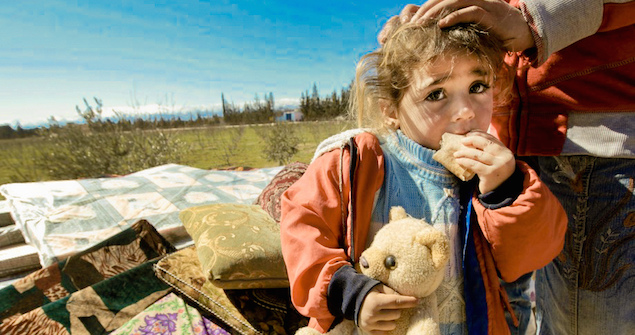Europe and the Immigrant Crisis: The East-West Divide

This week, five EU member states most affected by the refugee crisis met in Brussels with leaders of Albania, Macedonia and Serbia to consider a unified, rather than a unilateral, approach to the waves of refugees approaching European borders. Their agreement covered the securing of their borders, and a commitment to provide food and shelter for those fleeing the violence in the Middle East.
This summer all eyes were on Europe. Not on its glamourous capitals or beautiful countryside, but rather on its coasts and borders. In only a few months almost 500,000 people entered the European Union (EU) through Greece, Italy, Spain and Malta. The largest refugee crisis in Europe’s post-World War history was the result of neglecting the hard reality. A reality of millions of refugees from Syria, Iraq and Afghanistan locked for months and years in camps neighboring Europe—in Turkey, Lebanon and Jordan or stranded in countries such a Libya and Eritrea.
They had enough of waiting and preferred to risk their lives (with almost 3000 losing them on the way) for a spark of hope for a better tomorrow. Yet what has escaped most observers is the growing divide among EU member states on what the reaction to these developments should be. To the surprise of many, for the first time since the EU’s 2004 “big bang” enlargement, the fault lines were between Western Europe and the Central European newcomers.
As the European Commission struggled to put together a plan to spread the 120,000 refugee burden more evenly across EU member states, Central European states were the only ones who vigorously opposed it. This was despite the fact that Slovakia or the Czech Republic would take on no more than 1500 refugees each and 54,000 refugees were relocated from Hungary. Instead these three governments, joined later by Poland and Romania, insisted that decision-making on granting a residence permit must remain in the hands of national governments.
By objecting the quota schemes within the Schengen zone, Central European leaders have alienated their key allies—Germany, France, the European Commission and the European Parliament—all indispensable partners in responding to Russia’s growing aggressiveness on EU’s eastern borders. They have also found themselves in the unlikely camp of David Cameron. The same David Cameron they bashed a few months earlier for trying to limit EU mobility by scapegoating Polish, Romanian and other Central European migrants to the UK, as part of a political campaign to win populist right votes. Why would they do so?
What stands behind the divide?
The Central European reaction was driven primarily by fear. A fear of the unknown. First, most countries from the region have not had much, if any, experience with mass immigration. Having been the stage of two World Wars and later forced to become Soviet Union satellite countries, throughout the 20th century the region has been a source of massive emigration rather than one encouraging newcomers. Because of the Nazi holocaust and Stalin’s forced deportations of minorities after 1945, countries like Poland have become artificially homogenous. Others, like the Czech Republic, Slovakia, Hungary, Romania were left with small minorities of mainly Slavic or Roma origins.
Second, despite a growing number of foreigners arriving in Prague, Warsaw or Budapest after 1989, a belief prevailed that migration is a threat to be guarded against rather than an opportunity to be embraced. With literally no public debate on immigration policy, the world “multiculturalism” became associated by with either scenes of violent clashes on the outskirts of Paris or a tool of left-wing parties to kill European national identities. Today, it seems impossible to have a reasonable discussion about the undeniable economic benefits that come from migration and about the absolute necessity to bring in more migrants to Central Europe—a region home to some of the world’s fastest-shrinking countries.
Finally, there is a clear prejudice against Muslims. With a minuscule population of Islamic believers—nowhere in Central Europe do they 0.1% of the total population—chances are that most Central Europeans have never met a Muslim. Yet Slovak Prime Minister Robert Fico spoke recently of a Europe under threat from an “onslaught” of Arab migrants. As he stressed, if his country accepted forced distribution of asylum-seekers under an EU quota system, “then we will wake up one day and have 100,000 people from the Arab world and that is a problem I would not like Slovakia to have”. These words reflect a general sentiment of many Central European societies which see Muslims only through the lenses of religious fundamentalism, terrorism and integration problems encountered in some Western European societies.
Sadly, even moderate parties in Central Europe have resisted to the idea of burden-sharing and binding EU quotas. They have argued in Brussels that supporting them would invite a populist backlash on a national level from xenophobic anti-European forces. This completely misses the point. None of the countries that took the bulk of the refugee burden (Greece, Italy, Malta, France, Germany or Sweden) have experienced a surge in anti-European forces, and increased EU solidarity would actually help governments combat xenophobic anti-immigration parties. However, this type of thinking is foreign to most Central European governments.
Where do we go from here?
In a rare move on 23 September, the Council of Ministers of Interior outvoted Hungary, Slovakia, the Czech Republic and Romania passing the controversial quota plan without reaching a consensus. The story is however far from over.
Firstly, the plan to re-locate 120,000 refugees EU-wide, applies only to 66,000 who are in Italy and Greece. The other 54,000 were to be moved from Hungary, but now this number will be held “in reserve”, until governments decide where they should go.
Second, the Slovak Prime Minister Robert Fico has vowed to sue Brussels at the European Court of Justice over the decision and declared he would not implement it and take 1,000 refugees that the plan required from Slovakia.
The decision to vote on an issue as controversial as EU asylum policy was a risky one. To expect that Central European politicians would go against their strongly resenting publics is unwise and will bring damage to the whole European integration project which runs on consensus. At the same time however, the EU cannot allow itself to be a breeding ground for xenophobia, anti-refugee hysteria and rejection of burden-sharing. By enjoying all the benefits of common borders within Schengen, Central Europeans should be expected to demonstrate that they are ready also to bear the costs. After all, this is what European solidarity is about.
Dr Katarzyna Pisarska is the Founder and Director of the European Academy of Diplomacy and the Visegrad School of Political Studies.
This article is published under a Creative Commons Licence and may be republished with attribution.





